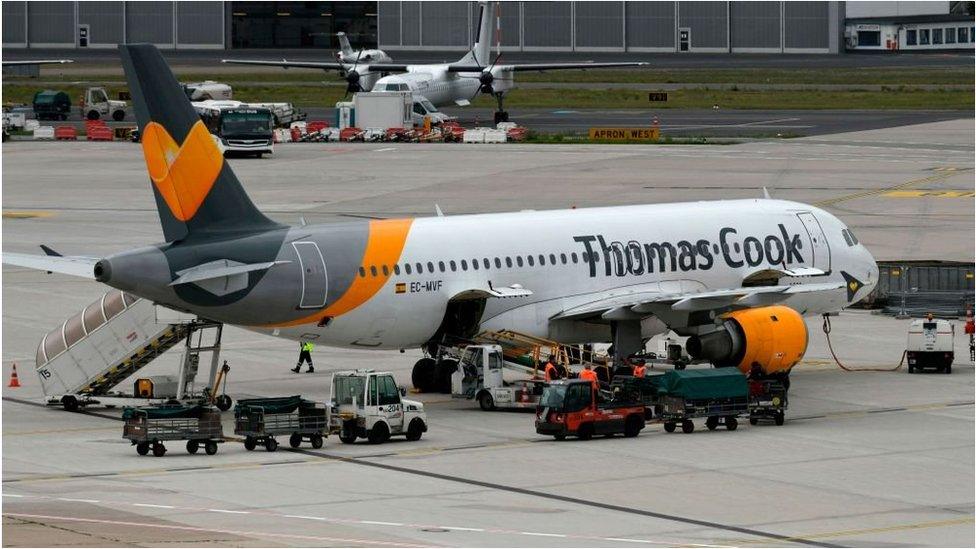Thomas Cook: 40% of holidaymakers back in UK
- Published
- comments

The Civil Aviation Authority (CAA) says it has now flown a total of 61,000 Thomas Cook customers back to the UK, taking the total to 40% of passengers.
On Thursday it used 69 flights to bring back 15,000 people as part of its repatriation scheme following the collapse of the holiday group.
Some 72 flights are due to operate on Friday to return 16,000 people.
The CAA says Operation Matterhorn will continue until 6 October with more than 1,000 flights planned in total.
The authority said 95% of passengers have been flown home on the planned day of their departure.
"An operation of this scale and complexity will inevitably cause some inconvenience and disruption and I am very grateful to holidaymakers for bearing with us as we work around the clock to bring them home," said Richard Moriarty, chief executive of the CAA.

Separately, Thomas Cook staff are due to meet at Manchester Airport today. They plan to raise the topic of unpaid wages.
The latest data from the Insolvency Service shows that 6,000 Thomas Cook staff in the UK have been made redundant and just over 3,000 employees are currently retained.
Thomas Cook collapsed after it failed to find funding to continue paying its bills. Its appeal to the government for £250m was rebuffed.
Condor, Thomas Cook's German-based airline business, received a €380m (£336m) loan from the German government which will allow it to operate until a buyer is found.
There had been warning signals that all was not well at Thomas Cook.
In May, the company reported a £1.5bn loss for the first half of its financial year, with £1.1bn of the loss caused by the decision to revalue My Travel, the business it merged with in 2007.
Thomas Cook also came close to collapse in 2011. Trading was weak and, just as now, it had too much debt. The firm owed about £2bn when the pension deficit was included. Its rescue plan involved a £425m fundraising from shareholders to help it cut borrowings.
However, all that rescue money was used up, taking its debts back to about £1.7bn by the time the company collapsed.
- Published26 September 2019

- Published26 September 2019

- Published23 September 2019
